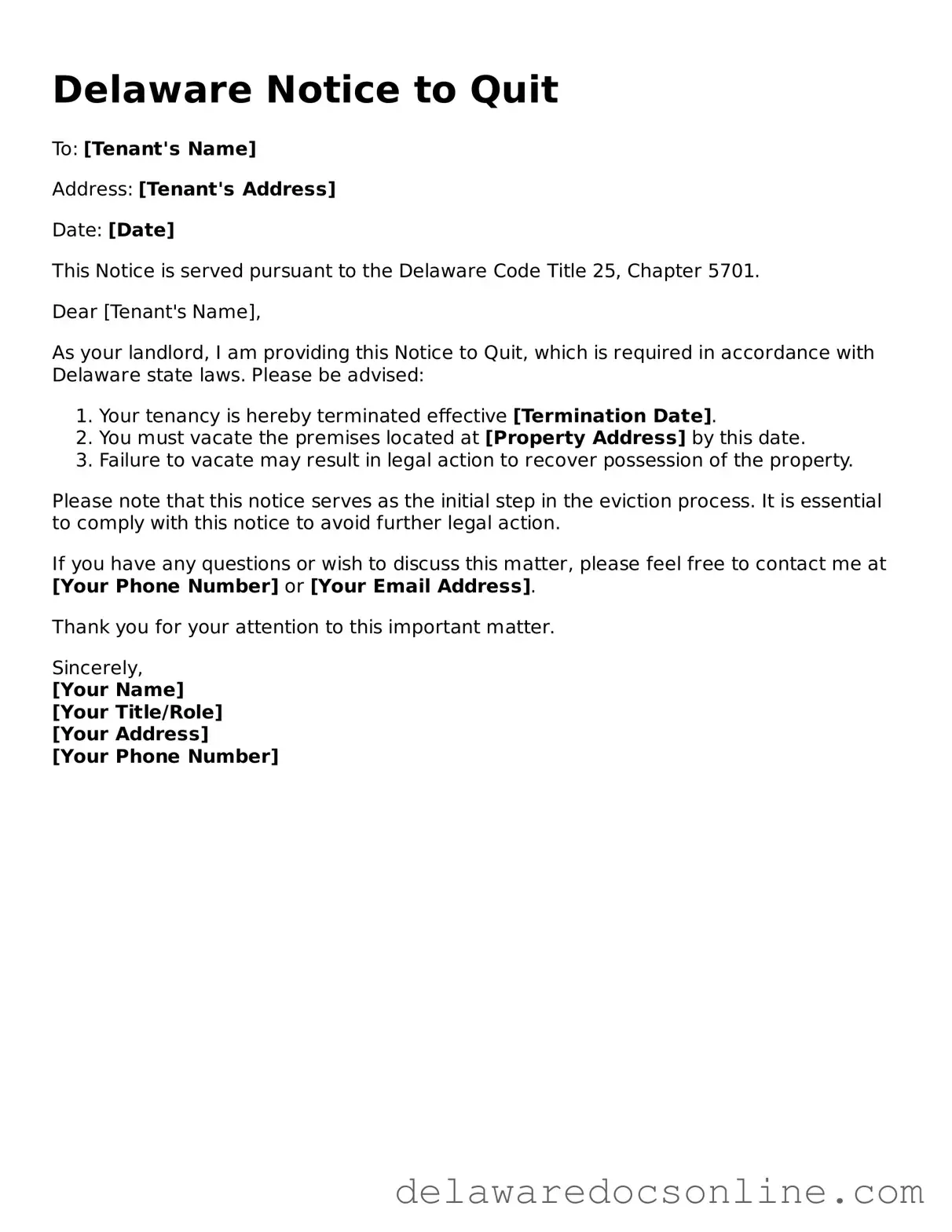Attorney-Verified Notice to Quit Document for Delaware
The Delaware Notice to Quit form is a legal document used by landlords to formally notify tenants that they must vacate the rental property. This notice serves as a crucial step in the eviction process, ensuring that tenants are aware of their obligations and the timeline for leaving. Understanding this form is essential for both landlords and tenants to navigate their rights and responsibilities effectively.
Make Your Notice to Quit Now
